Showing Spotlights 17 - 24 of 559 in category All (newest first):
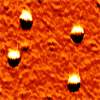 CNM-Au8 gold nanocatalysts exhibit a unique protein corona composition that enables them to cross the blood-brain barrier, paving the way for new treatments for neurodegenerative diseases.
CNM-Au8 gold nanocatalysts exhibit a unique protein corona composition that enables them to cross the blood-brain barrier, paving the way for new treatments for neurodegenerative diseases.
Mar 19th, 2024
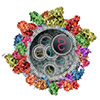 Engineering the biomolecular corona could unlock the clinical potential of lipid nanoparticles for targeted, personalized nanomedicines beyond mRNA vaccines.
Engineering the biomolecular corona could unlock the clinical potential of lipid nanoparticles for targeted, personalized nanomedicines beyond mRNA vaccines.
Mar 14th, 2024
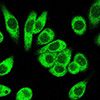 Researchers develop a groundbreaking silk peptide nanoparticle system for co-delivering erlotinib and curcumin, marking a significant advancement in targeted cancer therapy with the potential to overcome current treatment limitations.
Researchers develop a groundbreaking silk peptide nanoparticle system for co-delivering erlotinib and curcumin, marking a significant advancement in targeted cancer therapy with the potential to overcome current treatment limitations.
Mar 13th, 2024
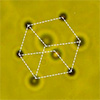 Researchers have developed a method for precisely controlling the 3D arrangement of microscopic particles using laser light and a phase-changing gel medium.
Researchers have developed a method for precisely controlling the 3D arrangement of microscopic particles using laser light and a phase-changing gel medium.
Mar 10th, 2024
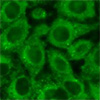 Researchers explore the potential of porous silicon nanotube bundles as nanocarriers for delivering small interfering RNA (siRNA) into cells, achieving around 50% knockdown of a target protein. This drug delivery approach holds promise for RNA therapeutics.
Researchers explore the potential of porous silicon nanotube bundles as nanocarriers for delivering small interfering RNA (siRNA) into cells, achieving around 50% knockdown of a target protein. This drug delivery approach holds promise for RNA therapeutics.
Mar 6th, 2024
 Novel dual energy harvesting device combines magnetic field and ultrasonic waves to safely generate over 50 mW - enough to swiftly recharge pacemakers without surgery.
Novel dual energy harvesting device combines magnetic field and ultrasonic waves to safely generate over 50 mW - enough to swiftly recharge pacemakers without surgery.
Feb 28th, 2024
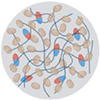 Inspired by morphogenesis, researchers create a reconfigurable living material from magnetic microparticles, yeast cells, and hydrogels. Additive biomanufacturing takes a leap forward.
Inspired by morphogenesis, researchers create a reconfigurable living material from magnetic microparticles, yeast cells, and hydrogels. Additive biomanufacturing takes a leap forward.
Feb 16th, 2024
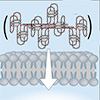 Scientists detail technique to camouflage immunostimulatory nucleic acid nanofibers via dna aptamer functionalization, thereby dramatically expanding possibilities for employing structures as vaccine adjuvants or immunotherapy vectors.
Scientists detail technique to camouflage immunostimulatory nucleic acid nanofibers via dna aptamer functionalization, thereby dramatically expanding possibilities for employing structures as vaccine adjuvants or immunotherapy vectors.
Feb 13th, 2024
 CNM-Au8 gold nanocatalysts exhibit a unique protein corona composition that enables them to cross the blood-brain barrier, paving the way for new treatments for neurodegenerative diseases.
CNM-Au8 gold nanocatalysts exhibit a unique protein corona composition that enables them to cross the blood-brain barrier, paving the way for new treatments for neurodegenerative diseases.
 Subscribe to our Nanotechnology Spotlight feed
Subscribe to our Nanotechnology Spotlight feed





